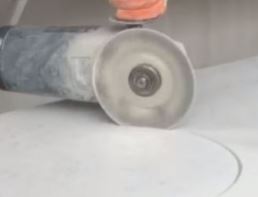How Much Longer For Artificial Stone?
Over the last 20 years artificial stone benchtops have become more and more popular. . . . but there is a dark side to this material.
There has been a massive rise in cases of Silicosis (260 in the last 3 years), a disease which has been linked to exposure to the dust when manufacturing and cutting stone benchtops.
What Is Silicosis?
 Silicosis is lung disease which can be fatel, caused by breathing in small pieces of silica.
Silicosis is lung disease which can be fatel, caused by breathing in small pieces of silica.
Silica is a mineral found in natural materials, including sand, rock, and ore.
When these materials are cut, ground, or blasted, the dust contains varying amounts of silica.
Compared to natural stone, many artificial stones contain over twice the amount of silica.
Cutting and grinding artificial stone to create benchtops thus massivly increases the risk of exposure to silica dust.
Acute silicosis can lead to weight loss and fatigue with just a few weeks of exposure.
Is A Ban Likely?
Australia has strict regulations for activities that generate silica dust.
They require the use of extraction fans, water spray systems, and respirators. helped severely reduce the prevalence of silicosis.
This sort of equipment is not however common on construction sites where the stone is installed!
Without stricter enforcement of health and safety regulations, Australia will continue to see a rise in silicosis.
There already calls for the material to be banned.
As with the asbestos ban in the late 20th century, implementing a ban on engineered stone benchtops will help save Australian lives.
In the meantime increasing public awareness of the dangers of silica dust may reduce demand for engineered stone benchtops.
Conclusion
Silicosis ris a threat to thousands of workers throughout Australia.
Until a total ban occurs consumers and businesses can help reduce exposure by selecting other materials for their kitchens.